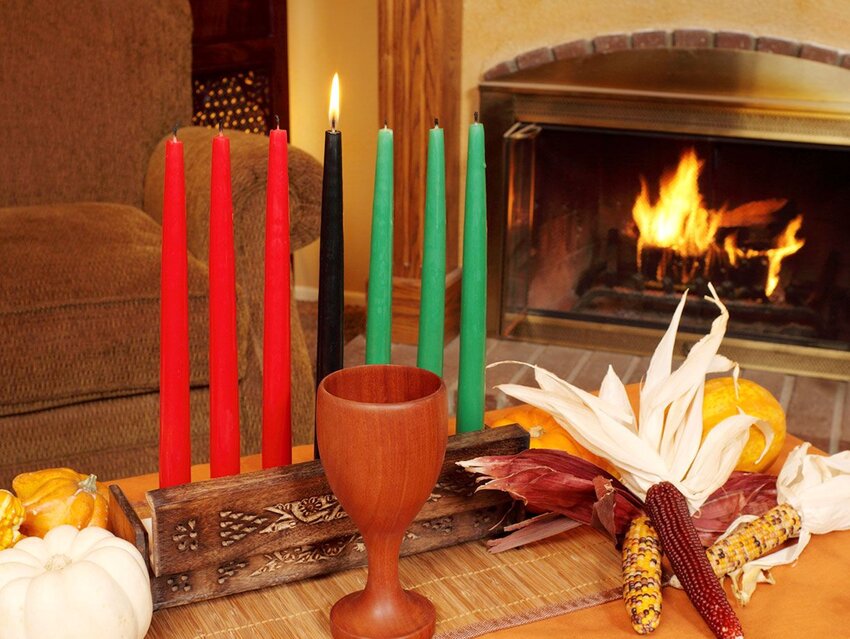Early winter is, of course, time for the holidays, where friends and family gather together. For some of us, that means celebrating around a Christmas tree, and for others, they love spinning a dreidel and noshing on latkes. Many also love Kwanzaa, which is celebrated primarily in America from December 26 to January 1 every year.
Dr. Maulana Karenga, an Africana studies professor, created this secular holiday in 1966 as a way to celebrate African-American and pan-African heritage with themes of unity, self-determination, collective work, cooperative economics, purpose, creativity, and faith. Here are some important words to know about Kwanzaa and how to celebrate the holiday.
Matunda Ya Kwanza
Dr. Karenga chose the name “Kwanzaa” based on the phrase, matunda ya kwanza, which means “first fruits'' in Swahili. Most Kwanzaa-related words are Swahili, but the name of the holiday itself is not. The extra “a” was added to make the word seven letters to include the seven children present at an early celebration. The holiday takes inspiration from the first fruit celebrations that could promise a good harvest among the Zulu. Kwanzaa is also a time to reflect and reconnect to one’s heritage and ancestors; Dr. Karenga tied in Kawaida philosophy into the celebration, which focuses on “cultural revolution, social change, and bringing good to the world.”
Nguzo Saba
This phrase translates to “The Seven Principles” of Kwanzaa. They include unity (umoja), self-determination (kujichagulia), collective work and responsibility (ujima), cooperative economics (ujamaa), purpose (nia), creativity (kuumba), and faith (imani). Community is central to many of these principles, but ujima focuses on socially supporting one another, while ujamaa focuses on uplifting the greater community through economic support
Mishumaa Saba
Mishumaa saba refers to the seven candles used to celebrate Kwanzaa. These candles — three red, three green, and one black — reflect the Nguzo Saba. The center black candle, lit first every evening, represents unity. To its left are the red candles, which represent self-determination, collective work, and cooperative economics. The green candles, which sit to the right, represent purpose, creativity, and faith. The candles are lit from left to right; this progression is meant to represent struggle giving way to hope.
Kinara
The kinara, which is Swahili for “candlestick,” holds the candles. While many kinaras are made of wood, they can be made with other materials. The kinara symbolizes the connection to the community, and gathering around the kinara each night of the holiday can give friends and family a space to reflect upon each of the seven principles.
Karamu
Karamu is the name of the feast that happens on the sixth day of Kwanzaa, December 31st. Friends and family gather to eat good food and participate in making crafts. Traditional dishes at a karamu include collard greens and black eyed peas, plantains, jollof rice, and fried okra. Sweet potato pie and sweet peach cobbler may also make an appearance for dessert. The sixth day of Kwanzaa also represents creativity, so craft-making may be a part of the party.
Heri za Kwanzaa
This is how you can wish someone a Happy Kwanzaa. Add this sentiment along to your wishes for a “Happy Hanukkah,” “Merry Christmas,” “Seasons Greetings,” and a “Happy New Year.”
Featured image credit: AvailableLight/ iStock

